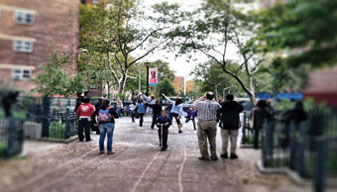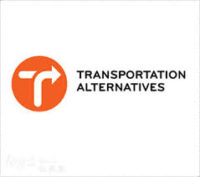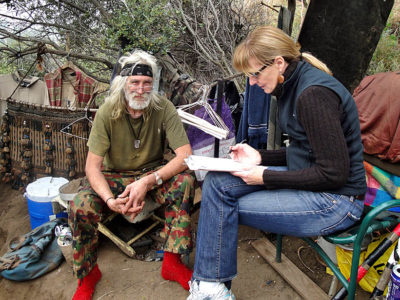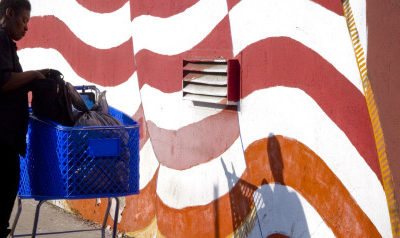When the New York City Housing Authority built the Brownsville and Tilden Houses in Central Brooklyn 65 years ago, they didn’t think much about the street grid. Far more important in their minds were the units, the courtyards and the cost. Decades later, however, residents who are fed up with dangerous traffic and difficult street crossings are fighting to remedy the error of that oversight, and T.A. is helping out.
In collaboration with the Brownsville Partnership, Yvette W. Rouget, T.A.’s 2013 Dr. Carl Henry Nacht Fellow and a resident of the Brownsville Houses, has been working on a plan to re-map three mid-block crosswalks. The new crosswalks would help community members safely and conveniently cross the double-length blocks that surround the enormous housing complexes and take advantage of a “community trail” established by the Brownsville Partnership.
“In the midst of uncontrollable crime, my community is gaining a sense of self-determination and control through our work to change the physical streets,” Yvette said. “We just got bike lanes and a Slow Zone — it makes us believe there’s a strong possibility that these mid-block crosswalks can happen too.”
Although that plan is just now gaining steam, its momentum started last year when Yvette’s Nacht Fellow predecessor, Stephanie Kneeshaw-Price, recruited Brownsville residents to participate in a community research project, which culminated in a paper titled Safe Streets are Healthy Streets. Among the many findings in that work, residents pointed to the intersection of Blake Avenue and Osborn Street as a location in need of a mid-block crosswalk. Soon after, residents at the Brownsville Partnership’s HOPE Summit identified the intersection of Livonia Avenue and Osborn Street as another dangerous spot for pedestrians. Yvette and a handful of other engaged residents picked up on those kernels and are now fighting for crosswalks at those locations, as well as at Osborn Street and Dumont Avenue.
“Our goal in creating the community trail was twofold: It was to increase physical activity, but it was also to improve safety along these mid-block pedestrian paths,” said Nupur Chaudhury of the Brownsville Partnership. “More people walking on this path means more eyes on the street and less crime. By highlighting residents on the trail, it becomes a community trail that is unique to Brownsville.”




